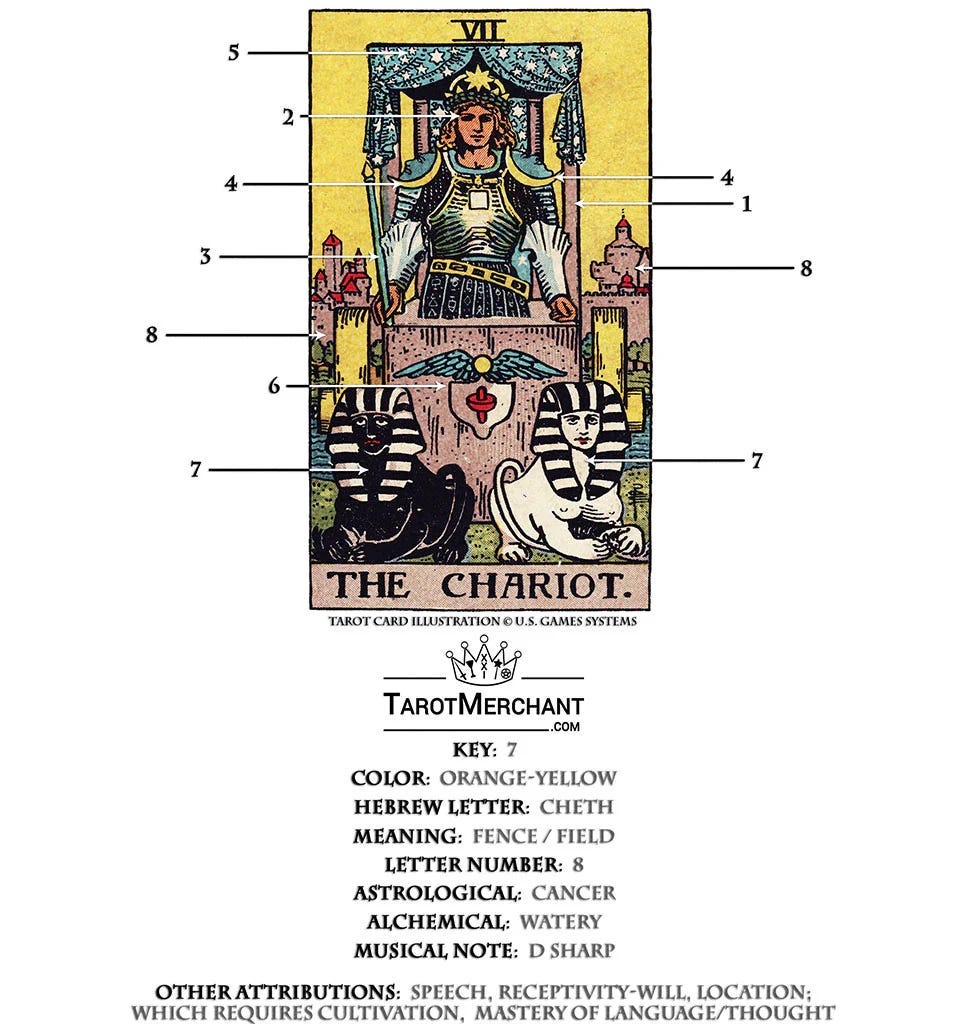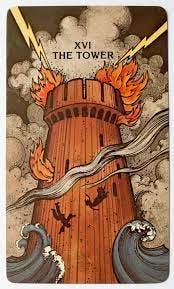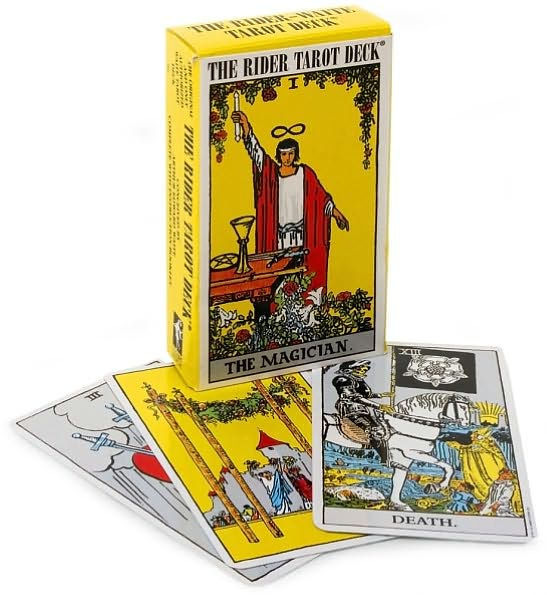What is the Tarot, Really?
The major arcana of the Tarot are the 22 iterations of reality. It tells a story of the Fool (zero card) going through a journey, meeting personalities that serve different purposes along the way. However, it simultaneously tells the story of whole lifetimes, as each of the major arcana is affiliated with a day of the month, and each person born on that day takes on traits of the card they were born under.
For instance, my mother and my friend Autumn were both born under the Chariot. The Chariot, which has rulership under Cancer, is about perseverance in the face of repeated strife and struggle. Both my mom and Autumn have been dealt a bad hand in several areas of life, both having philandering husbands, both being close to criminal behavior, both having a 'nice guys finish last' attitude that doesn't serve them when choosing mates.
The Chariot people usually become parents in scenarios where people born under other cards would not. Then, when terrible things happen, the Chariot says, "That's how men are. That's how life is."
The Tower, card 16, creates a personality that enjoys 'sticking it to the man' and has a problem with the prevailing authority almost without fail. People born May 16 or November 16 will have this issue with the prevailing powers. They usually believe that people of their own generation are somehow more 'correct' than the older generation.
There is a surprising lack of full history of the Tarot out there.
The Tarot's origins can allegedly be traced back to 15th century Italy, where it first emerged as a card game called "tarocchi" among the nobility. These early decks, consisting of 78 cards divided into the major and minor arcana, were beautifully illustrated works of art. As the game spread across Europe over the following centuries, it evolved and adapted to different cultural contexts, with various regional variations emerging. For most of its early history, Tarot was primarily used for gaming, much like modern playing cards. Modern playing cards have their origin in Tarot.
It wasn't until the late 18th century that Tarot began to take on its now-familiar associations with divination and the occult. French occultists, most notably Antoine Court de Gébelin, began to attribute ancient Egyptian wisdom and mystical significance to the cards. This interpretation gained further traction in the 19th century, with figures like Éliphas Lévi connecting Tarot to Kabbalistic and other esoteric traditions.
The publication of the Rider-Waite-Smith deck in 1909 marked a significant turning point, popularizing Tarot in the English-speaking world and solidifying its place in modern occult practice. Tarot cards are always drawn to specific criteria; The Priestess must be seated in front of a row of pomegranates, the Star Card must have 7 stars above to indicate the Pleiades, and so on.
My belief is that the Tarot originates in Egypt. This was the inspiration for Aleister Crowley's Thoth Tarot deck, and generally the viewpoint I hold as well. If you learn about contemporary researcher Stav Appel's work on the Tarot, he explains how Jews may have hidden aspects of the Torah into the Tarot so that the Jewish tradition could be carried through eras in which Judaism was forbidden or oppressed. For instance, The Priestess is carrying the Torah - why, if it's just a divination game from 15th century Europe? Is it possible that when the Jews and Egyptians crossed paths, some of this ancient knowledge intersected?
Depending on who you think was given the original data that constitutes the Tarot, be it the Hebrews or the Egyptians, your perception may vary. The Hebrew Alphabet, which Jews believe was divinely given, has 22 letters, just as the Tarot has 22 major arcana, so keep that in mind. Could the same divine force have inspired both?
But to me, there is no question the Tarot is divinely inspired. The Major Arcana could be easily seen as a message from the Gods about human nature and the likelihood that one performs, behaves, and prioritizes a certain data set of reality throughout their lives.
For instance, as a person born under The Magician card, I am perpetually interested and fascinated by occult mysteries and hidden truths. I didn't set out to care about such things, but little by little, like a sculpture emerging from a hunk of marble, I care more and more about it.
A person born on the 18th, under the Moon, is going to prioritize their emotions and memories more than practical, tactical reality. The Moon in Astrology rules the interior self and the emotions. Ergo, a person with the Moon sign of Capricorn, which is a sullen and morose sign, will have morbid, perhaps depressive tendencies. A person born under the Hermit is likely to be a loner who likes solitude. And so on.
This was the focus of the work of Gary Goldschneider and his book, The Secret Language of Birthdays.
The 22 'shapes' of the Major Arcana as well as the remaining 'pip' cards are informed by astrology, as you can see indicated by the four suits; Wands is Fire, Pentacles Earth, Cups is Water, and Swords is Air.
Air is ideas and reason, Water is emotions and memory, Fire is action and movement, and Earth is integrity and wealth, so you can see how those symbols manifest in the real world. People who are water dominant with Cancer Moons or Scorpio Suns are gonna likely be feminist, be for immigration, be against masculinist tropes.
The Magician, Card I The astrological year begins in Spring, with Aries, which is considered the 'first' sign. Aries is cardinal, in that it starts a season. Aries begins the year and is Fire, thus motivated, forceful, always on the go. Its opposite is Libra, taking things in, appreciating the taste of a donut on scales other signs simply wouldn't understand, beholding the beauty of a tree in fall or of the breeding patterns of insects.
Thus the first card is The Magician, a representative of Aries. But, in the traditional Tarot, the Magician card has the accoutrements necessary to perform a circumcision. Why? Because circumcision is a process informed by Abraham, an avatar for the Age of Aries, and the Patriarch of the Jewish people.
An important question arises with tarot versus other esoteric arts; if I simply cut up some paper, draw the symbols of tarot on them, and then do a reading, will I get the same results? How abstract or minimal can this process get? The other world works in mysterious ways.
So, how can all this be? It all presents a very different paradigm of humanity than the convention under which we live - that people are born essentially equal, then make choices that result in outcomes. Instead, the Tarot infers that there are only so many shapes of being, and that those shapes are as old as time, and continuously manifest no matter what the ethics, fashion, government, or mythos of a culture are.





